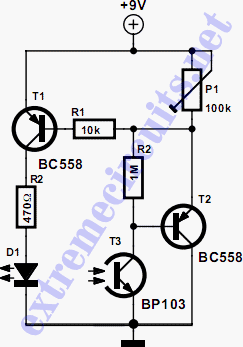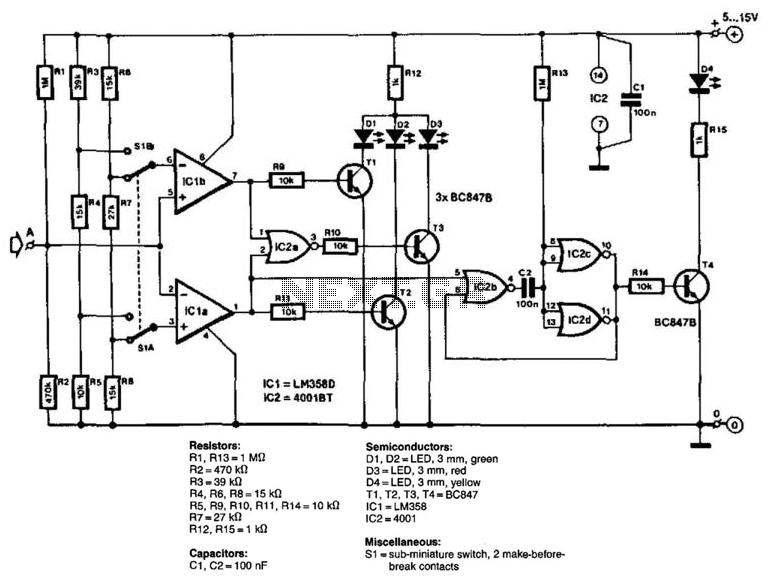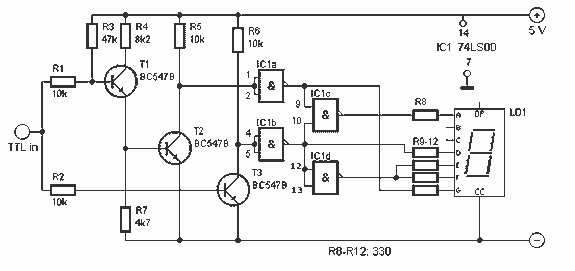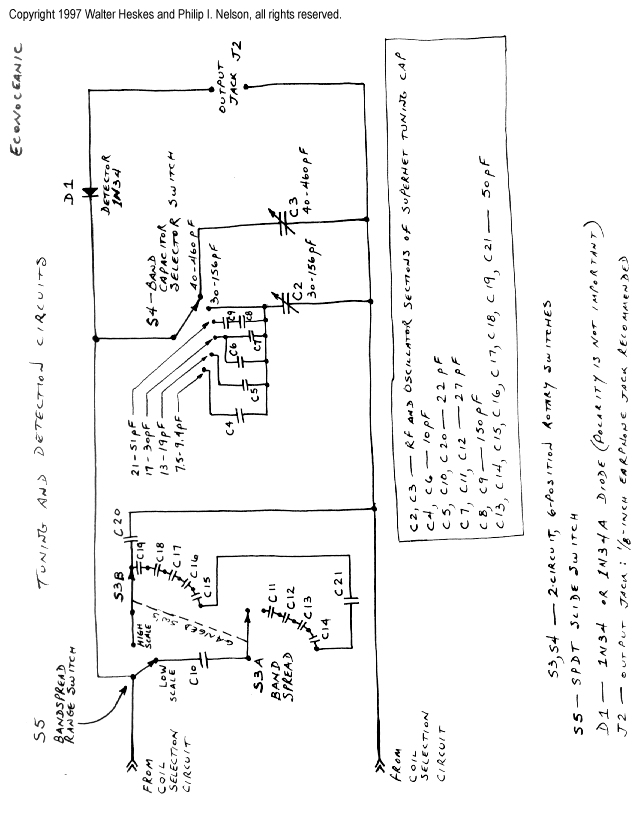
Crystal Tester
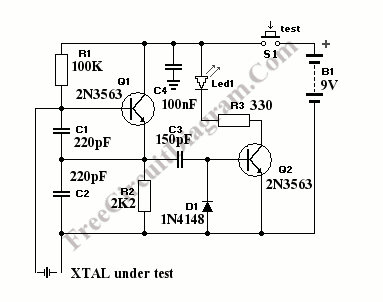
A crystal tester circuit is straightforward, comprising only an oscillator and a detector. This circuit utilizes a single transistor for the oscillator.
The crystal tester circuit is designed to evaluate the performance and functionality of crystals, which are essential components in various electronic applications, particularly in oscillators and frequency generation. The core of this circuit consists of an oscillator that generates a specific frequency signal, which is determined by the crystal under test.
The oscillator typically employs a transistor configured in a feedback loop that allows it to oscillate at a frequency defined by the crystal's resonant frequency. The crystal is connected to the base of the transistor, and its characteristics influence the oscillation frequency. When the circuit is powered, the transistor amplifies the oscillations, and the resulting output signal is fed to a detector.
The detector serves to convert the oscillating signal into a more easily readable format, such as a voltage level or an audible tone, indicating the presence and performance of the crystal. This output can be monitored using an oscilloscope or an audio output device, allowing for a straightforward assessment of the crystal's integrity and functionality.
In summary, the crystal tester circuit is an efficient tool for testing crystal components, providing a simple yet effective means to determine their operational status and suitability for various electronic applications. The use of a single transistor simplifies the design while maintaining the essential functionality required for effective crystal testing.A crystal tester circuit is very simple, it contains only oscillator and detector inside. This crystal tester circuit uses one transistor for the oscillator and. 🔗 External reference
The crystal tester circuit is designed to evaluate the performance and functionality of crystals, which are essential components in various electronic applications, particularly in oscillators and frequency generation. The core of this circuit consists of an oscillator that generates a specific frequency signal, which is determined by the crystal under test.
The oscillator typically employs a transistor configured in a feedback loop that allows it to oscillate at a frequency defined by the crystal's resonant frequency. The crystal is connected to the base of the transistor, and its characteristics influence the oscillation frequency. When the circuit is powered, the transistor amplifies the oscillations, and the resulting output signal is fed to a detector.
The detector serves to convert the oscillating signal into a more easily readable format, such as a voltage level or an audible tone, indicating the presence and performance of the crystal. This output can be monitored using an oscilloscope or an audio output device, allowing for a straightforward assessment of the crystal's integrity and functionality.
In summary, the crystal tester circuit is an efficient tool for testing crystal components, providing a simple yet effective means to determine their operational status and suitability for various electronic applications. The use of a single transistor simplifies the design while maintaining the essential functionality required for effective crystal testing.A crystal tester circuit is very simple, it contains only oscillator and detector inside. This crystal tester circuit uses one transistor for the oscillator and. 🔗 External reference

